What is the expected output of the following snippet?
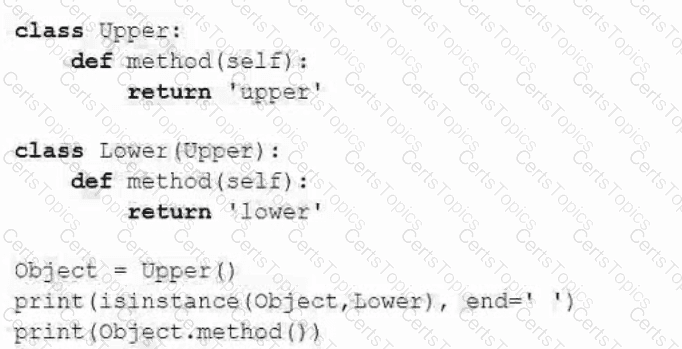
What is true about Object-Oriented Programming in Python? (Select two answers)
What is the expected output of the following code?

If you need a function that does nothing, what would you use instead of XXX? (Select two answers)
def idler ( ):
XXX
Which of the following statements are true? (Select two answers)
Assuming that the snippet below has been executed successfully, which of the following expressions will evaluate to True? (Select two answers)
string = 'SKY' (:: -1)
string = string (-1)
What can you deduce from the following statement? (Select two answers)
str = open('file.txt', "rt")
Which one of the platform module functions should be used to determine the underlying platform name?
What is true about Python class constructors? (Choose two.)
Assuming that the code below has been executed successfully, which of the following expressions will always evaluate to True? (Select two answers)
import random
v1 = random. random()
v2 = random. random()
What would you use instead of XXX if you want to check whether a certain ‘ key' exists in a dictionary called diet? (Select two answers)
II
if XXX:
print("Key exists")
What is the expected behavior of the following code?

Which of the following expressions evaluate to True? (Select two answers)
The following class hierarchy is given. What is the expected out of the code?

Which of the following expressions evaluate to True? (Select two answers)
Assuming that the following piece of code has been executed successfully, which of the expressions evaluate to True? (Select two answers)

The following expression
1+-2
is:
What is the expected behavior of the following code?

It will:
What is the expected output of the following snippet?

What is the expected output of the following code?
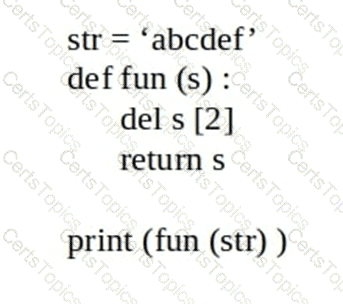
What is the expected behavior of the following code?

What is the expected out of the following code of the file named zero_length_existing_file is a zero-length file located inside the working directory?

What is the expected behavior of the following code?

What is the expected behavior of the following code?
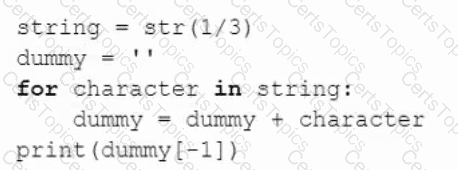
What is the expected output of the following code?
def foo(x,y,z):
return x(y) - x(z)
print{f00(lambda x: x % 2, 2, 1) )
How many elements will the list2 list contain after execution of the following snippet?
list1 = [False for i in range (1, 10) ]
list2 = list1 [-1:1:-1]
Which of the following literals reflect the value given as 34.23? (select two answers)
If you need to serve two different exceptions called Ex1 and Ex2 in one except branch, you can write:
Python strings can be “glued” together using the operator:
Which of the following sentences are true? (Select two answers)
A method for passing the arguments used by the following snippet is called:
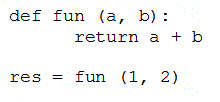
Assuming that the following code has been executed successfully, selected the expression which evaluate to True (Select two answers)
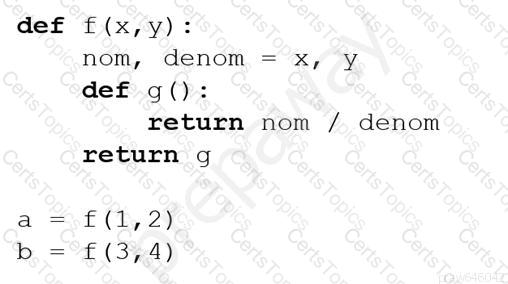
Assuming that the following snippet has been successfully executed, which of the equations are True? (Select two answers)
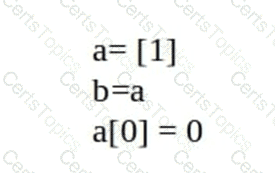
What is the expected behavior of the following code?

What is the expected output of the following snippet?
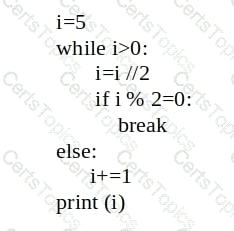
What is the expected behavior of the following code?
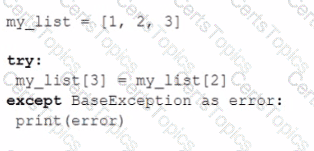
Which line can be used instead of the comment to cause the snippet to produce the following expected output? (Select two answers)
Expected output:
1 2 3
Code:

What will be the value of the i variable when the while e loop finishes its execution?
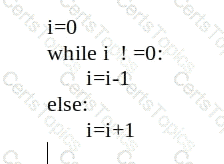
A Python module named pymod.py contains a variable named pyvar.
Which of the following snippets will let you access the variable? (Select two answers)
The first parameter of each method:
What is true about Python packages? (Select two answers)
Assuming that the following piece of code has been executed successfully, which of the expressions evaluate to True? (Select two answers)

Which of the following invocations are valid? (Select two answers)
The following class hierarchy is given. What is the expected output of the code?

You are going to read just one character from a stream called s. Which statement would you use?